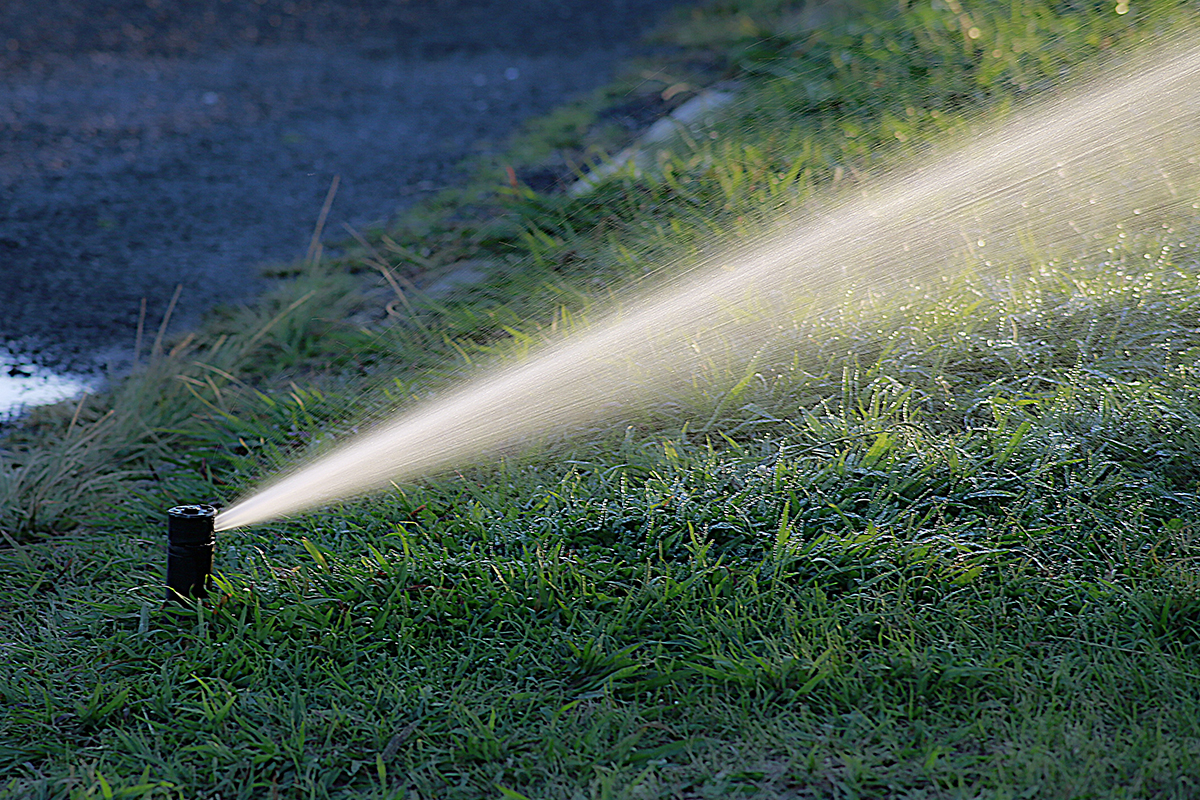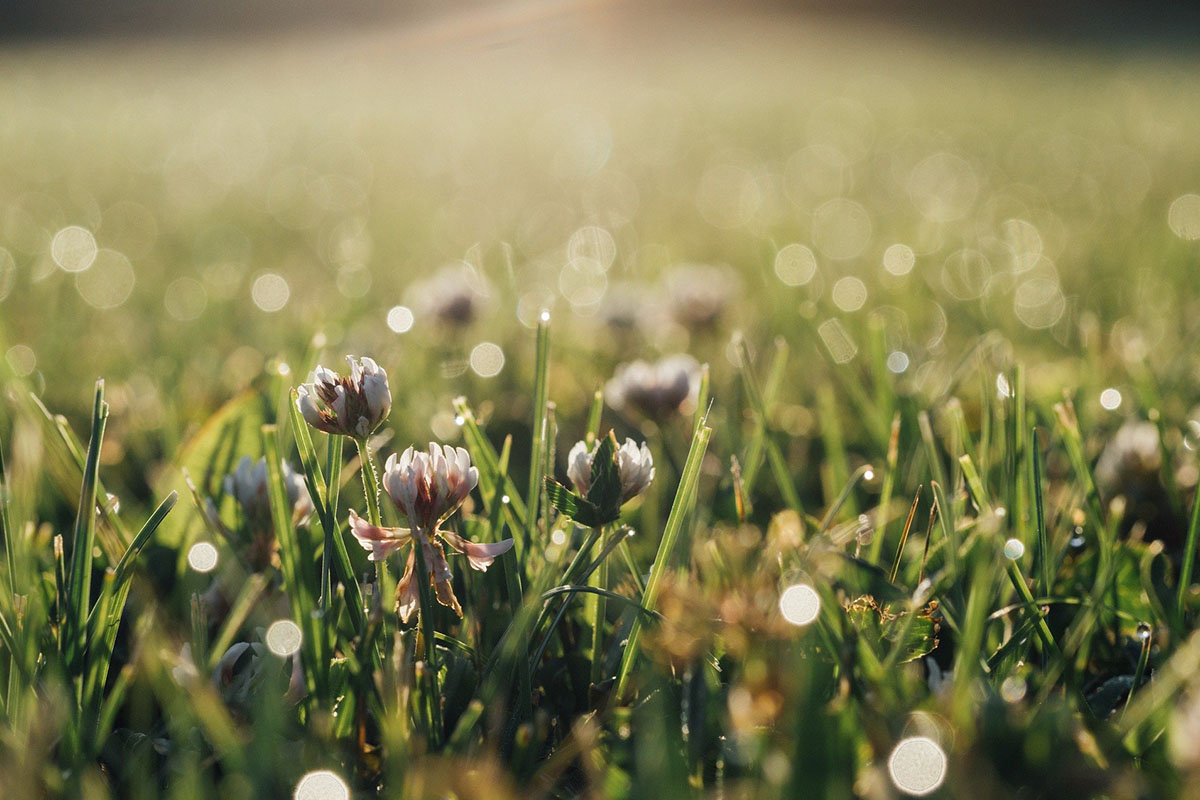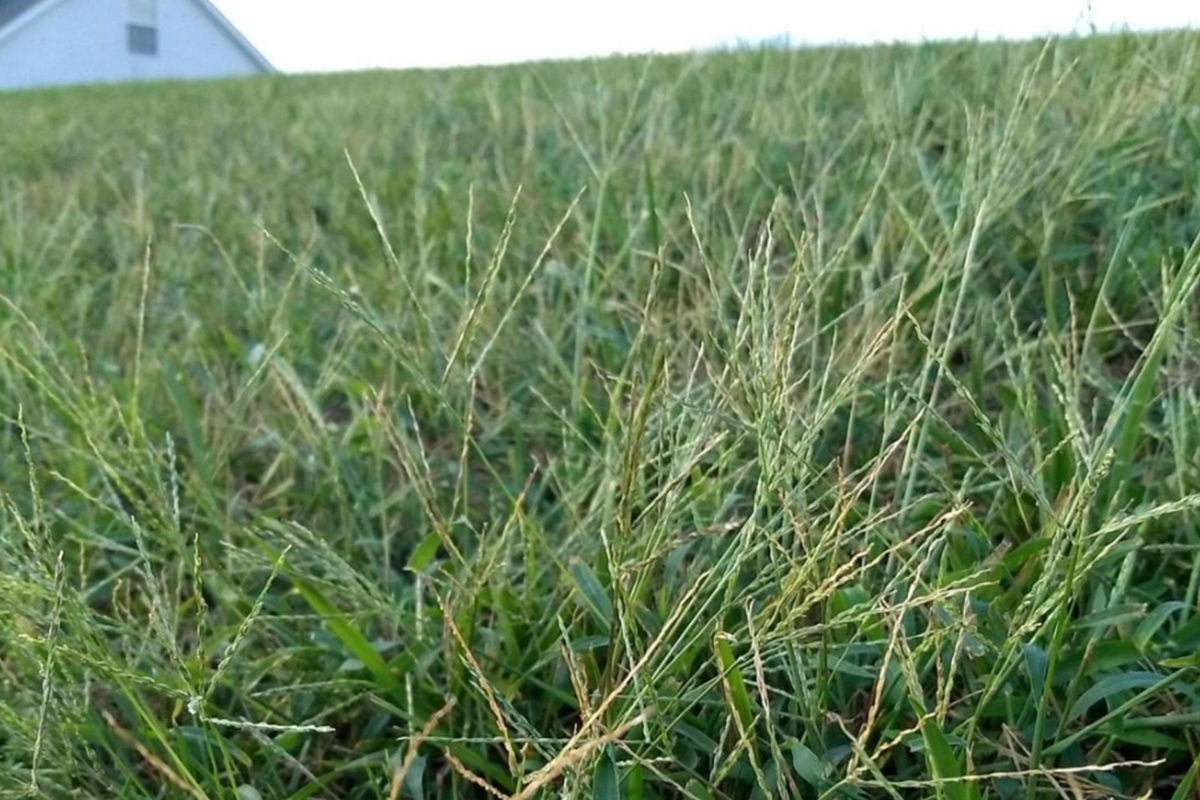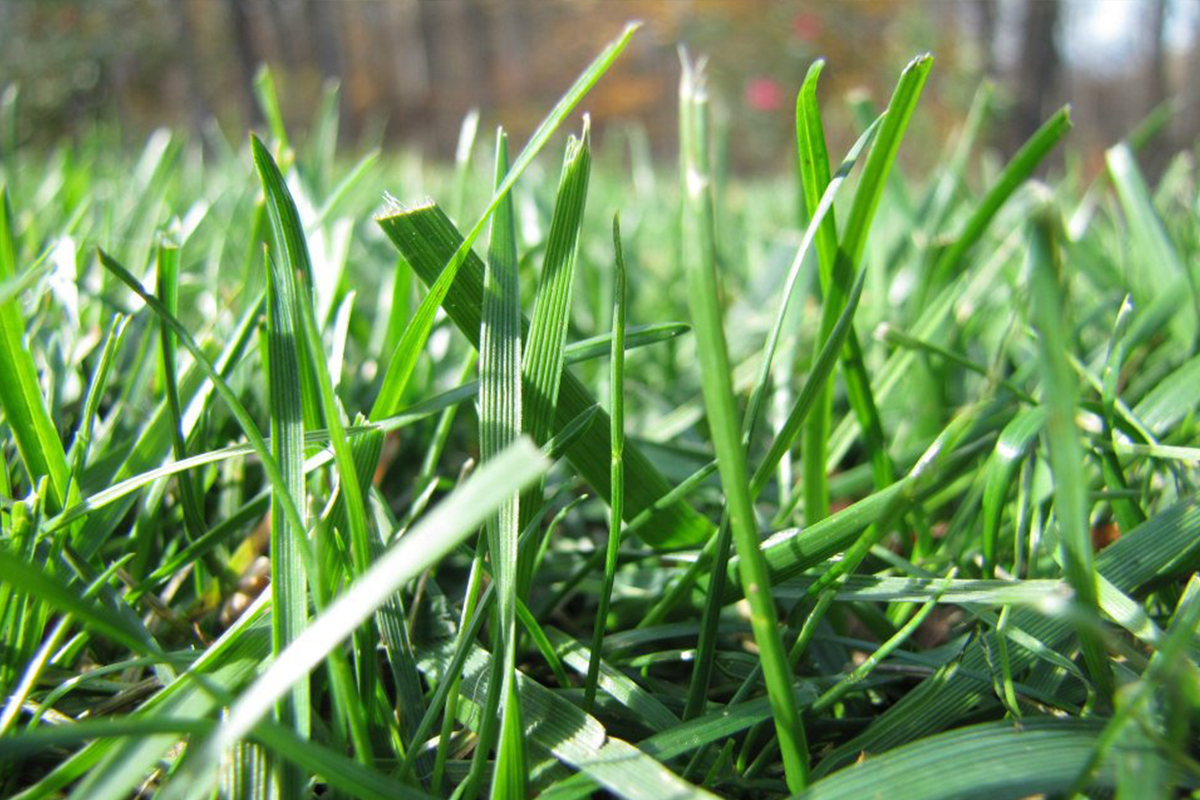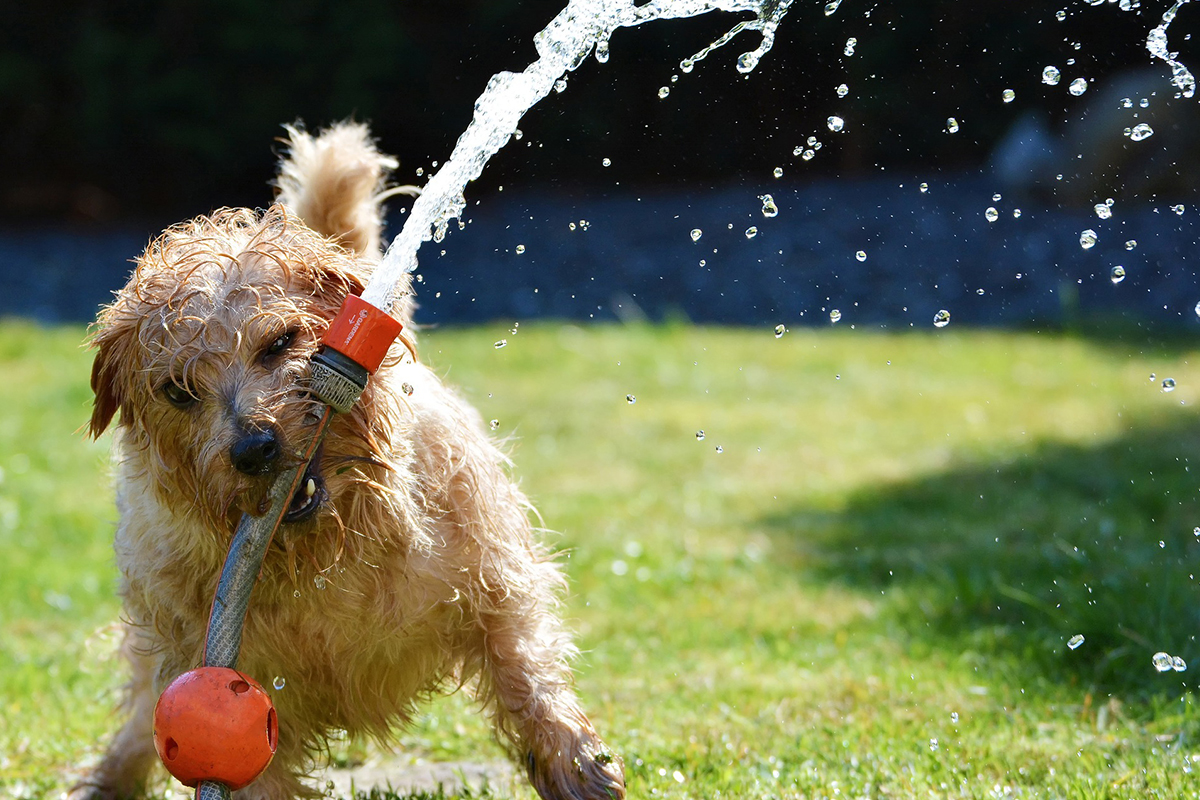July was hot and dry in the New River Valley. Reports from the National Weather Service in Blacksburg show that while the average temperature for the month was on par with what we normally have, the rainfall was almost 2 inches less than normal amounts!
Within the last week, the grass has gotten a bit of a reprieve with some rain showers throughout the region, but during the dry spell, we had a lot of customers ask us the best ways to care for their lawn during such brutal summer weather.
Based on recommendations from Virginia Cooperative Extension, as well as our own knowledge from years in the lawn care industry, here are some of our tips for caring for your turf in the heat of summer:
Know How & When to Water
Most lawns in our area consist of cool season grasses. These types of grasses, whether fescues, ryegrass, or Kentucky bluegrass, commonly go dormant during the hottest part of the summer to protect their crowns (the part from which the blades grow). This means that your lawn may actually turn light brown, but the roots are most likely still healthy!
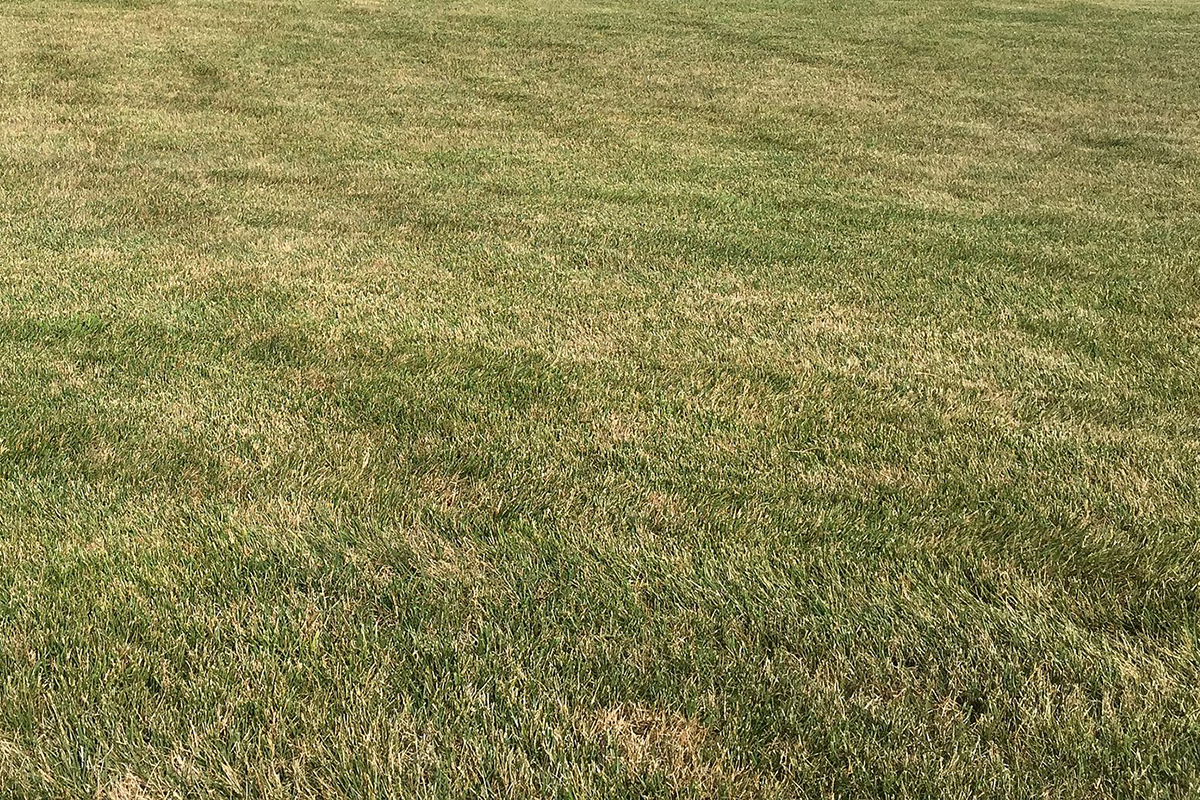
Photo by Famartin [CC BY-SA 4.0 (https://creativecommons.org/licenses/by-sa/4.0)], from Wikimedia Commons
Many people are often confused by this natural dormancy and think their grass is dying. They start to wonder if they should irrigate their lawns to keep the grass alive. While you may consider watering, it may not be necessary. Cool season grasses will typically come out of their dormancy naturally as they get more of the water they need for growth. You may have even noticed this in the past few days with our increase in rainfall. Grass that was brown just days before may already be turning greener!
If sustained periods of dry heat return before summer’s end and you’re once again considering watering your lawn, remember to water in the early morning hours if possible. Also, use a deep and infrequent irrigation strategy rather than a light and frequent one.
VCE describes it this way:
“If irrigating, use a deep and infrequent irrigation strategy where you deliver thorough soakings of water that your soil can readily accept (i.e. don’t apply so much water that it pools and/or possibly moves off site) on an infrequent basis (very often every 3rd day, sometimes as frequent as every other day). The concept is to moisten the root zone in the top 3 to 4 inches of the soil to nurture and sustain roots that can extract water from deeper in the soil. Light and frequent irrigation encourages roots to remain near the top of the soil and the turf quickly stresses under drying conditions.”
Use Proper Mowing Heights
When it’s not raining much, the grass typically isn’t growing much either. So take care when mowing during this delicate time. You’ve probably heard of the 1/3 mowing rule—never take off more than 1/3 of the leaf blade when you mow. In the summer, however, especially during dry times, we recommend mowing even higher than normal (3-4 inches at minimum). This promotes deeper, healthier roots that can help your turf to better combat weeds and to look greener overall once the rains do come!
If you have any specific questions, or would like to discuss how Green Care can help you care for your lawn the rest of this summer and throughout the year, get in touch with us today!

